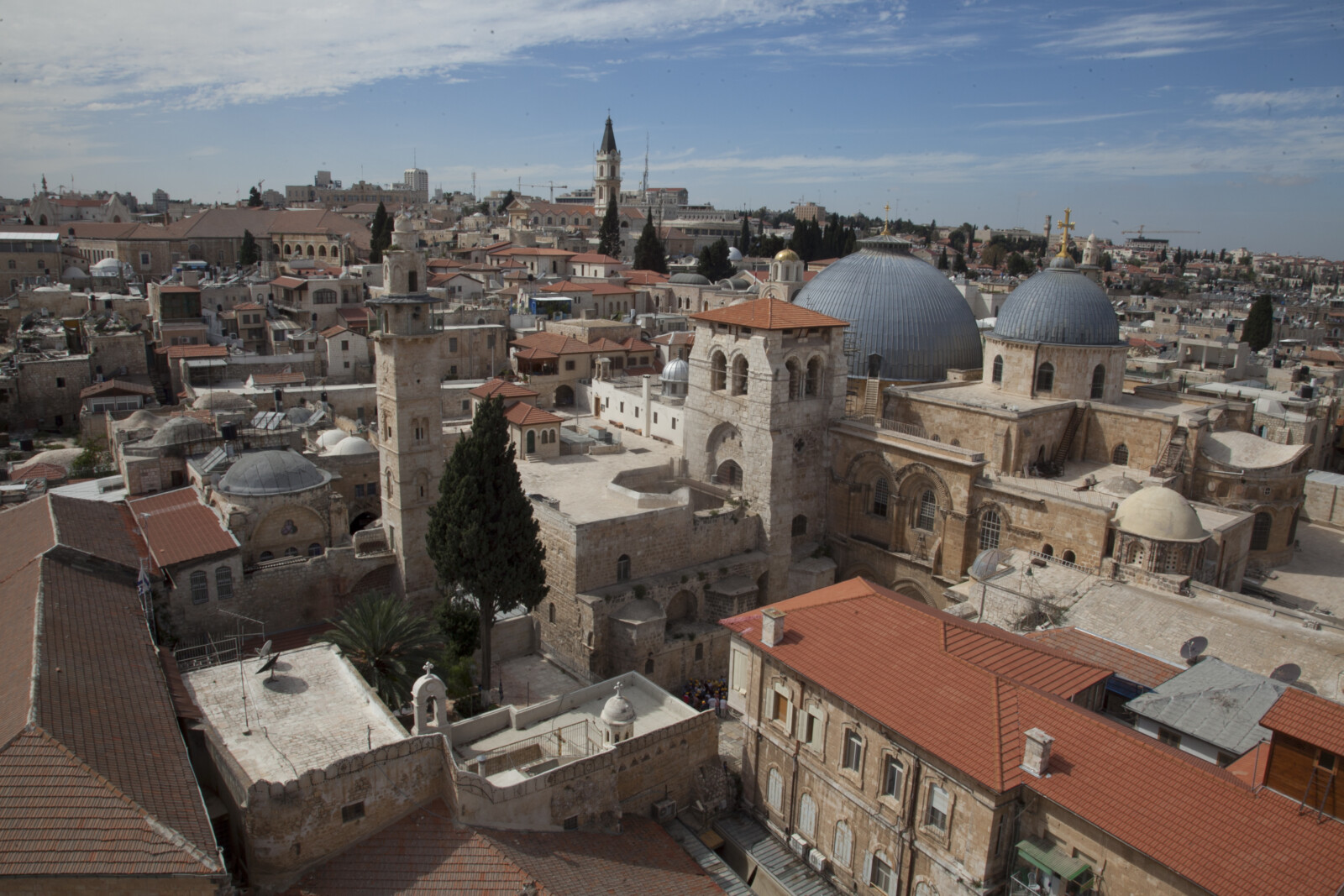Sixth anniversary of the laying of the foundation stone of the Terra Sancta Museum
Today, six years after the first stone of the Terra Sancta Museum was laid, we publish the speech given at the Convent of the Flagellation by the then Custos, Pierbattista Pizzaballa, today Latin Patriarch of Jerusalem. His words, today as then, inspire the actions of the Franciscans and all the lay people who every day are committed to building the Terra Sancta Museum.
————————–
Jerusalem, as everyone knows, is a city with a universal vocation. From our point of view we have to insist on the need to preserve the Christian character of the city of Jerusalem as one of the fundamental elements of its particular identity.
By a universal vocation, we mean the reality in which Jews, Muslims and Christians have lived together for centuries, sharing the spaces and, at times, the same traditions; the reality in which all the communities express their traditions and historical narrations, close or connected to one another. Universal means open to the world, but that also contains in it the life of the world. These lives belong to one another.
Jerusalem would lose its universal nature, if it did not keep visible and public all the elements of this character, including the Christian character.
By Christian character we mean:
• The possibility to pray publicly in the city. In this city the European sense of keeping prayers for a more private sphere is not so important. The Muslims pray in public. The Jews observe the Shabbat in public. The Christians must be able to do the same according to their various traditions.
• To support the various Christian institutions (schools, hospitals etc.)
• To support the Christian presence and its natural demographic development.
• To preserve the natural bonds between the Christians of Jerusalem and their brothers in the Holy Land.
• To preserve the enormous Christian heritage, its history and its traditions.
The Christians are part of the identity of this Holy City, and without them Jerusalem cannot be the city with a ‘universal’ vocation, “For my house shall be called a house of prayer for all peoples” (Is. 56: 7). The idea of the Terra Sancta Museum comes into being in this context.
At first, the Custody of the Holy Land wanted a space where it could exhibit the countless historical objects received as gifts over the centuries and where pilgrims – but not only – could get to know the history of the Holy Places they come to visit. Gradually, realized that it was necessary to give these projects a single context and a broader vision and so we reached the idea of the Terra Sancta Museum: not only a place where to put this huge number of objects, but a “living” cultural centre with the purpose of letting everyone know about the bonds between the city and Christian traditions, both local and international, from the first centuries to the present day.
The new Museum will show how and where the first Christians lived; what the pilgrims of the first century saw and what the Christian Churches of the World have done over the centuries to keep their relationship with the Mother Church active.
Gifts from the Kings of Spain, France, the United Kingdom and many others, together with the utensils of the Franciscans’ daily life, the lamps, the coins and the pottery of the first centuries with the objects of Byzantine, then Crusader and Mameluk Art, will be part of the heritage on display. The enormous collection of Turkish Firmans, the Papal Letters and the simple registers of the convents will show a marvellous story of the life of the Christian community of Jerusalem which, despite all the difficulties, has always been part of this city. Jerusalem really has always been open to the world, but it has also always contained the life of the world in it.
With the Terra Sancta Museum, we want to create the reference for everyone who is looking for this aspect, this identity of Jerusalem.
We know perfectly well that we are not the only Christians in the city and that there are many other Christian traditions, especially the Oriental ones. We hope that in the future other Churches will join us in this project as well. One day we could succeed in creating in Jerusalem a network between the various Cultural Centres (not only the Christian ones) that would allow visitors, but above all its inhabitants, to absorb this peculiarity of Jerusalem.
Someone has to start and why shouldn’t it be the Custody and the Franciscans?
This project is international from the outset and we Franciscans want to put ourselves at the service of this idea, which we now consider a mission. We have already received expressions of interest from other Cultural Centres in Jerusalem. The presence of the representatives of the different countries here today confirms that we have great attention from abroad as well.
I want to thank fra Alliata, Director of the Museum of the Studium Biblicum Franciscanum for his support, in particular the pro Terra Sancta Association to which the Custody of the Holy Land has entrusted the task of bringing this project to life and all those who have supported and sponsored it, allowing us at last to concretely start the works today.
May the Lord bless us all.
Thank you.
Fra Pierbattista Pizzaballa, ofm
Custos of the Holy Land

[es]Vista general de la Basílica del Santo Sepulcro desde lo alto del campanario luterano ©CTS[/es][fr]Vue générale de la basilique du Saint-Sépulcre du haut du clocher luthérien ©CTS[/fr][it]Vista generale della Basilica del Santo Sepolcro dall’alto del campanile luterano ©CTS[/it][en]General view of the Basilica of the Holy Sepulchre from the top of the Lutheran bell tower ©CTS[/en]



